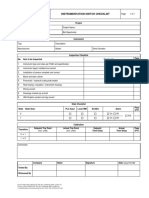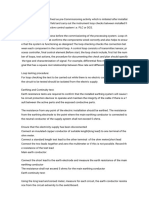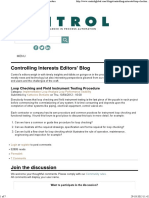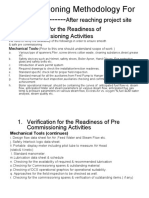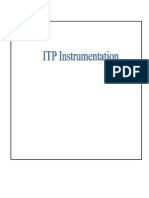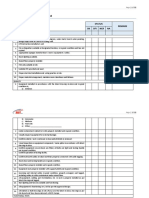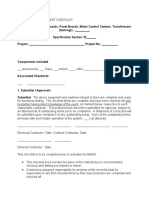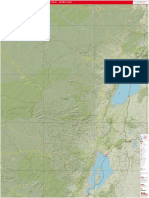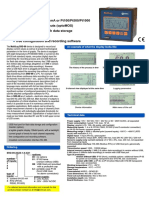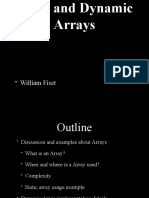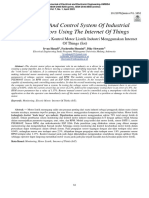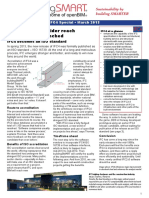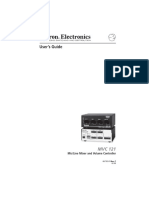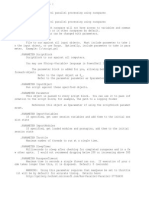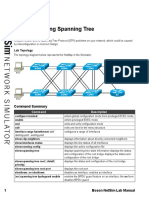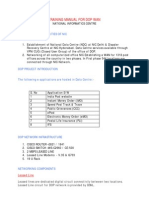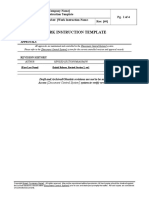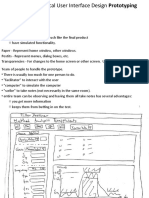100% found this document useful (5 votes)
1K views14 pagesDCS Commissioning Checklist
The document outlines the steps for commissioning a distributed control system (DCS). It includes pre-requisite checks such as ensuring the proper installation of cabinets and components. The commissioning steps include checking the cabinet hardware, internal wiring, I/O assignment, system startup, redundancy, and communications. Tests are also performed on the I/O signals, control logic, graphics, trending, and loading programs online and offline to ensure the DCS is functioning properly before handover.
Uploaded by
Elton HoveCopyright
© © All Rights Reserved
We take content rights seriously. If you suspect this is your content, claim it here.
Available Formats
Download as DOCX, PDF, TXT or read online on Scribd
100% found this document useful (5 votes)
1K views14 pagesDCS Commissioning Checklist
The document outlines the steps for commissioning a distributed control system (DCS). It includes pre-requisite checks such as ensuring the proper installation of cabinets and components. The commissioning steps include checking the cabinet hardware, internal wiring, I/O assignment, system startup, redundancy, and communications. Tests are also performed on the I/O signals, control logic, graphics, trending, and loading programs online and offline to ensure the DCS is functioning properly before handover.
Uploaded by
Elton HoveCopyright
© © All Rights Reserved
We take content rights seriously. If you suspect this is your content, claim it here.
Available Formats
Download as DOCX, PDF, TXT or read online on Scribd
/ 14


